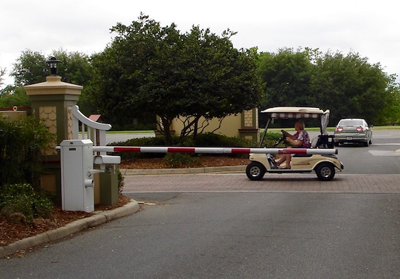The Next Steps in PTVs Are up to Us
This past week I attended the PGA Show and, of course, visited the exhibits of the three major golf car manufacturers—and then some. More than ever, insofar as the manufacturers are concerned, the Show has become a venue for new offerings of their personal transportation vehicles (PTVs). One could say that it is an uneasy venue, because while the Show is totally oriented to the golf industry, as it has been for years, the vehicle models on display go well beyond the golf segment.
Point A to Point B Versatility is Growing
While the vehicles on display are unmistakably golf car derivatives, as PTVs they have been upgraded in a variety of ways from light kits, to lift kits, to four-wheel brakes, to very cool touch screens, connected to performance markers in the vehicle, to GPS, BlueTooth, and the internet in general.
Some of these features, of course, are not so new, while others are newly introduced. The important aspect of these changes is that PTVs are becoming more “automotive”—that is, have the feel of a conventional, on-road vehicle. Not that you cannot tell the difference, but these enhancements to golf car-type vehicles, to include air conditioning and heating systems, audio, and LCD displays on the dashboard—all molded nicely into the driver/passenger interior and meaning greater luxury at stellar operational economies—strongly suggests the PTV will progressively substitute for your big car.
Manufacturers are Pushing the Change
Manufacturers have turned the corner on the fleet market and diversifying their model portfolios with PTV offerings. They know that this is now their big market with significant growth potential. The enhancements, as noted, the strategic change of direction by manufacturers, and the overall context of the clean energy movement point to increased on-road use—whether legal or not. And indeed there is a gap here between market opportunity and regulatory reality.
Thus, the way forward is filled with a lot of uncertainty. Changes in vehicle look and feel and performance are easier to accommodate within the gated community in one sense, because the community can set its own standards, regardless of what may go on outside. Venturing outside our private communities is another matter. Yet it seems highly probable that the market can only grow larger when the process of accommodation reaches beyond the gates.
Thus, the issues become more complex, dealing with city and municipal governing councils, and pushing for specific planning for small vehicle access. It should be noted that while this article is focused on individual ownership, shuttle systems, using larger framed electric vehicles will also be a factor in market growth. Four- and six-seater Polaris GEMs are now being used in shuttle systems in several municipalities around the country.
PTVs at the Dawn of Lithium Power
The new, very big deal is lithium power. Not only have E-Z-GO and Club Car introduced lithium batteries in their fleet and PTV models, new from the factory, but now several battery companies are offering “drop-in” lithium battery solutions for the existing stock of PTVs.
The advantages of lithium over lead acid batterie are numerous. They are not only substantially lighter than lead acid batteries, for the same or greater power—which means on this account alone, greater distance—but they also charge up much, much faster. Faster charging enables opportunity charging, and as charging stations proliferate throughout communities (yes, it will happen), range anxiety will ebb and ultimately be as little as the gas gauge reading quarter of a tank.
Another amazing aspect of the lithium battery is that while there is any charge in it at all, its power output will not degrade. As we know, with lead acid batteries power is constantly degrading as the battery runs through its charge. (Watch out, though, at the moment a lithium battery is fully discharged, it stops dead in its tracks. It turns out to avoid this you need to be alerted by an ampmeter, not a voltmeter. Thus, a new type of gauge will be featured on the dash panel.)
Who Will Decide?
Given these new enhancements and more coming, plus widespread market acceptance, which is sure to come, who will decide when and by how much the PTV revolution will spring upon the local environment beyond our gated community?
Happily, we are a pluralistic society, not only in terms of ethnicities, languages, and culture, but we are a society imbued with the concept of individual freedom of choice and political persuasion. Most importantly our society is based on the concept of private property and free markets. Given this (God help us should this change!), it is my belief that the needed changes in both broad public acceptance of the PTV, and the spread of the small, electric vehicle into broader, outlying communities, will be a matter up to us as consumers—and because public policy is involved, voters.
Contact the Author: Steve Metzger at smetzger@smallvehicleresource.com. Or check out our website at www.smallvehicleresource.com, where you will find an extensive database of vehicle models and can make side-by-side comparisons of vehicles based on a full set of specifications.


